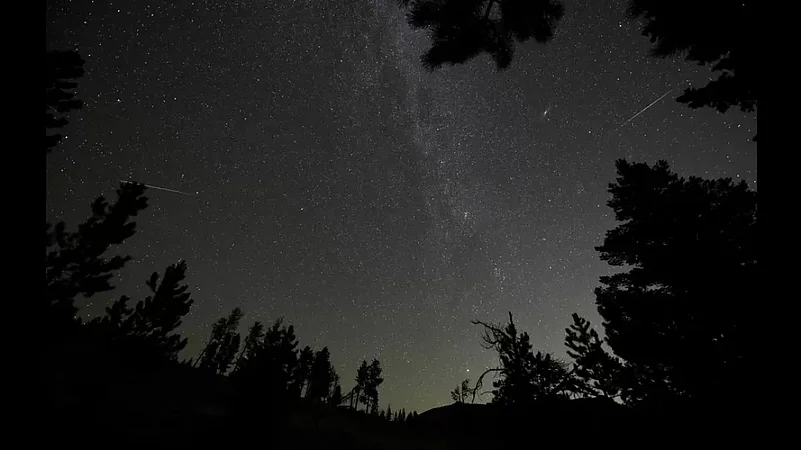The firt meteor shower in North America for 2024 may witness as many as 120 shooting stars every hour.
“The Quadrantids, which peak during early-January each year, are considered to be one of the best annual meteor showers,” NASA said.

The meteor shower is active from December 26, 2023, to January 16, 2024, with the Quadrantids peaking on Thursday, January 4. This year, the expected peak occurs at 7:53 a.m. Eastern Standard Time. Therefore, the best time to observe the shower from North America is from approximately 4:53 a.m. EST until dawn, as recommended by EarthSky.
The Quadrantids meteor shower has “the potential to be the strongest shower” each year, but it typically doesn't reach its full potential due to its brief six-hour peak period and the often unfavorable weather conditions in early January, as noted by the American Meteor Society.
Because of these factors, the meteors “usually lack persistent trains but often produce bright fireballs,” as stated by the American Meteor Society. Fireballs are characterized by larger bursts of light and color that can endure longer than a typical meteor streak, according to NASA.
Typically, a dark sky during the peak of the Quadrantid meteor shower yields an average of approximately 25 shooting stars per hour, as reported by the American Meteor Society. However, it may not be advisable to travel to dark-sky locations specifically for this event in 2024 because a bright last quarter moon will coincide with the peak of the Quadrantids. Moonlight tends to wash out the night sky, making it more difficult to spot fainter shooting stars. Nevertheless, it's worth noting that the Quadrantids are known for producing bright fireballs that can pierce through various types of light pollution.
As per information from EarthSky, the Quadrantid shower is one of four significant meteor showers annually known for their distinct and concentrated peaks. The other three meteor showers are the Lyrids, Leonids, and Ursids.
How To View Qaudrantids Meteor Shower
For optimal viewing of the Quadrantids, NASA recommends observing them during the nighttime and early morning hours. To enhance your viewing experience, it's advisable to locate a remote area far from city or street lights and be adequately prepared for winter weather conditions.
“Lie flat on your back with your feet facing northeast and look up, taking in as much of the sky as possible,” NASA stated. “In less than 30 minutes in the dark, your eyes will adapt and you will begin to see meteors.”
More About Quadrantids Meteor Showers
Meteor showers are usually named after the constellation from which their meteors seem to originate. In the case of the Quadrantids, they radiate from the now-obsolete constellation of Quadrans Muralis, which is located between the constellations of Bootes and Draco. This position places it near the end of the handle of the Big Dipper in the northern sky, as described by NASA. Due to its location in the sky, the Quadrantid meteor shower is exclusively visible in the Northern Hemisphere.
Shooting stars are meteoroids, which are small rocky particles that enter Earth's atmosphere. These tumbling particles undergo heating and vaporization, resulting in the release of energy that appears as streaks of light in the night sky. The Quadrantid meteor shower is believed to originate from the remnants of dust and debris left behind in the inner solar system by the asteroid 2003 EH1, which follows an orbit around the sun every 5.5 Earth years.



























